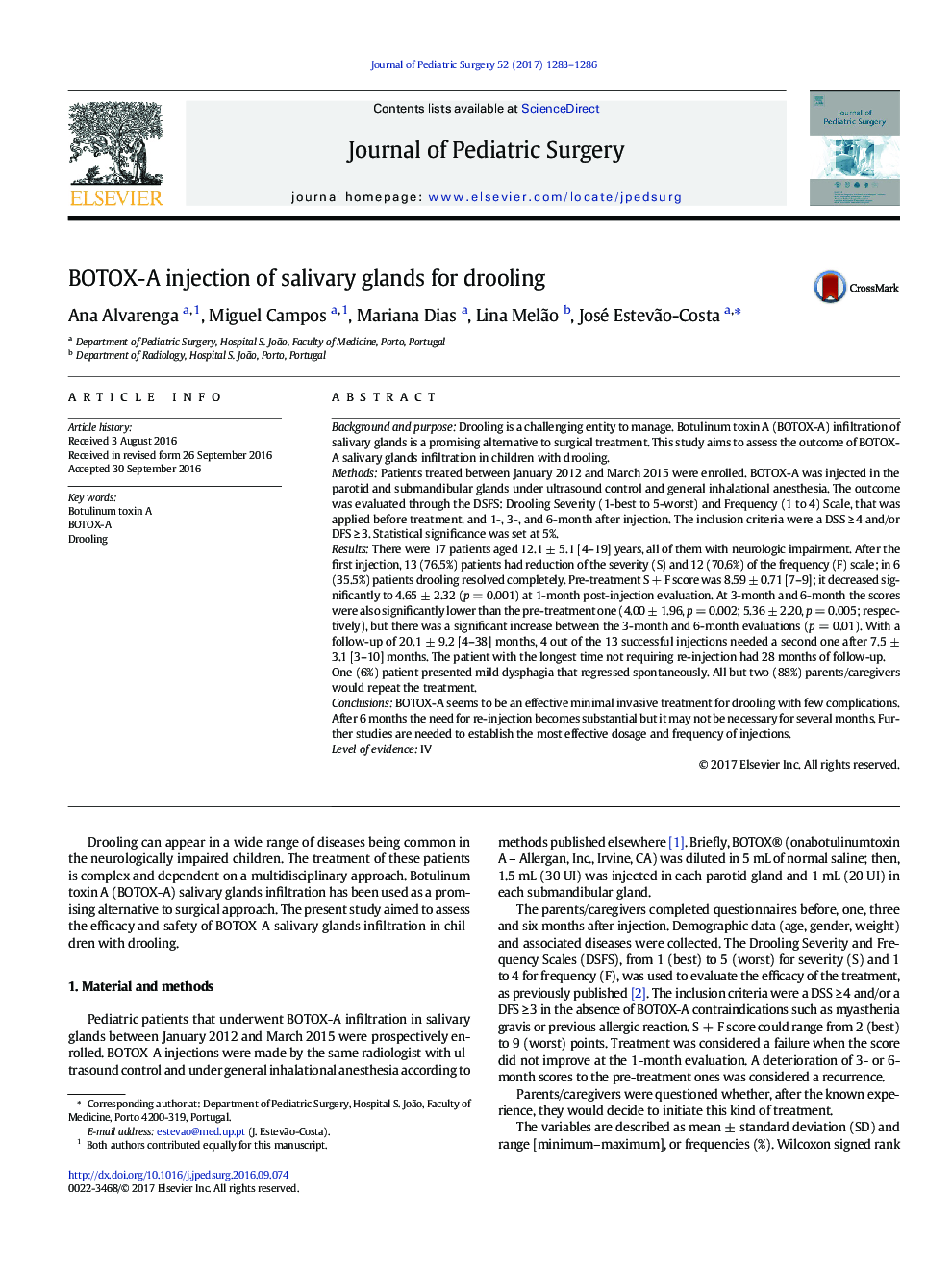| Article ID | Journal | Published Year | Pages | File Type |
|---|---|---|---|---|
| 5718100 | Journal of Pediatric Surgery | 2017 | 4 Pages |
Background and purposeDrooling is a challenging entity to manage. Botulinum toxin A (BOTOX-A) infiltration of salivary glands is a promising alternative to surgical treatment. This study aims to assess the outcome of BOTOX-A salivary glands infiltration in children with drooling.MethodsPatients treated between January 2012 and March 2015 were enrolled. BOTOX-A was injected in the parotid and submandibular glands under ultrasound control and general inhalational anesthesia. The outcome was evaluated through the DSFS: Drooling Severity (1-best to 5-worst) and Frequency (1 to 4) Scale, that was applied before treatment, and 1-, 3-, and 6-month after injection. The inclusion criteria were a DSS â¥Â 4 and/or DFS â¥Â 3. Statistical significance was set at 5%.ResultsThere were 17 patients aged 12.1 ± 5.1 [4-19] years, all of them with neurologic impairment. After the first injection, 13 (76.5%) patients had reduction of the severity (S) and 12 (70.6%) of the frequency (F) scale; in 6 (35.5%) patients drooling resolved completely. Pre-treatment S + F score was 8.59 ± 0.71 [7-9]; it decreased significantly to 4.65 ± 2.32 (p = 0.001) at 1-month post-injection evaluation. At 3-month and 6-month the scores were also significantly lower than the pre-treatment one (4.00 ± 1.96, p = 0.002; 5.36 ± 2.20, p = 0.005; respectively), but there was a significant increase between the 3-month and 6-month evaluations (p = 0.01). With a follow-up of 20.1 ± 9.2 [4-38] months, 4 out of the 13 successful injections needed a second one after 7.5 ± 3.1 [3-10] months. The patient with the longest time not requiring re-injection had 28 months of follow-up.One (6%) patient presented mild dysphagia that regressed spontaneously. All but two (88%) parents/caregivers would repeat the treatment.ConclusionsBOTOX-A seems to be an effective minimal invasive treatment for drooling with few complications. After 6 months the need for re-injection becomes substantial but it may not be necessary for several months. Further studies are needed to establish the most effective dosage and frequency of injections.Level of evidenceIV
